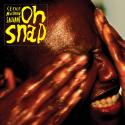The rain had vanished and there were whispers that the Afro-Brazilian gods were keeping it at bay as time got closer to the appearance of the headliner. The international superstar, singer, songwriter, environmentalist and former Minister of Culture ambled on stage like a cat, in a loping, slo-mo dance move, carrying his red electric guitar over his shoulder. Gil came dressed for a festival – no gorgeous silk suits but loose, pale t-shirts over beige tapered trousers. The dreadlocks long since cut are now replaced by short, fluffy grey hair resembling Mandela’s.
He greeted us by saying he would be playing a menu of songs in the forró style from north-east Brazil, the place where he grew up. That meant none of the familiars – the bossas, sambas, psychedelic tropicalias, but country music.
All of them create light and exhilarating rhythms which force fast, sexy twirls and shuffling steps
Gil launched his six-piece band with “Fé Na Festa” ("Faith in the Festival"), a jumpy, infectious forró exuding the flavour of the red-earth farmlands where it was born and which remains in the singer’s blood and soul. Its central melodic instrument is the accordion, and accompanying are the tinkling rhythms of a triangle, and marvellously muffled rhythms of the zabumba drum. All of them create light and exhilarating rhythms which force fast, sexy twirls and shuffling steps. Gil performs well while playing acoustic and electric guitars, and blends with the stunning young French violinist, Nicholas Krassik. Today’s forró is more electric and funky now it has landed in the metropolis, but still carries that rural, homey feel. In one of Gil’s famed show-stopping mini-lectures, he explains to WOMAD the story behind the style, and its relationship with European music, and the ancient fusions from French, Spanish and Bavarian – the source of the accordion.
The composer of “Fé Na Festas”, the late Luis Gonzaga, is Gil’s lifetime idol, the man in his neighbourhood who drew him into music. An intuitive talent, he was always loved for his modest, rural character – and raciness. Gil chose another homage, “Vem Morena”, for its fast, racy swing and lyrics: “Let's run away from here, baby, to somewhere there will be nothing but my nude body next to your nude body.” During one of Gil’s conversational pauses when he morphs into a caring teacher, he announced the death three days earlier of his beloved friend and virtuoso accordion player, Dominguinhos. He announced softly “a sacred homage",“Lamento Sertanejo” (see video below, featuring Dominguinhos). The song was a slow, hushed lament with Gil playing delicate melodic chords, the violin trance-like and repetitive, and the accordion as delicate as Dominguinho’s.
This repertoire was never going to be pure forró. Reggae basslines rippled through the night air in numerous songs, and several Marley covers were sung in Portuguese and English including “Three Little Birds” and “Nao Chore Mais” ("No Woman, No Cry”). Of all the songs in Gil’s vast book, every Brazilian knows “Expresso 2222”, another song that appears in almost every performance, even when it’s a forró night. Gil once said that he wrote it while on holiday here but soon added the mean truth: “They were hard times in Brazil then; they kicked me out.”
We had a quick conversation backstage and he asked if I was in a tent. Of course! I told him about lying inside, listening to the rain. He rushed to say that he had a tent when he and Caetano Veloso went straight to the Isle of Wight Festival as it was almost closing. He saw Hendrix, and from then on went everywhere. “I was a tent pioneer!” he laughed, “and went to all the festivals, saw everyone, the Rolling Stones to Eric Clapton, and performed a lot."















Add comment